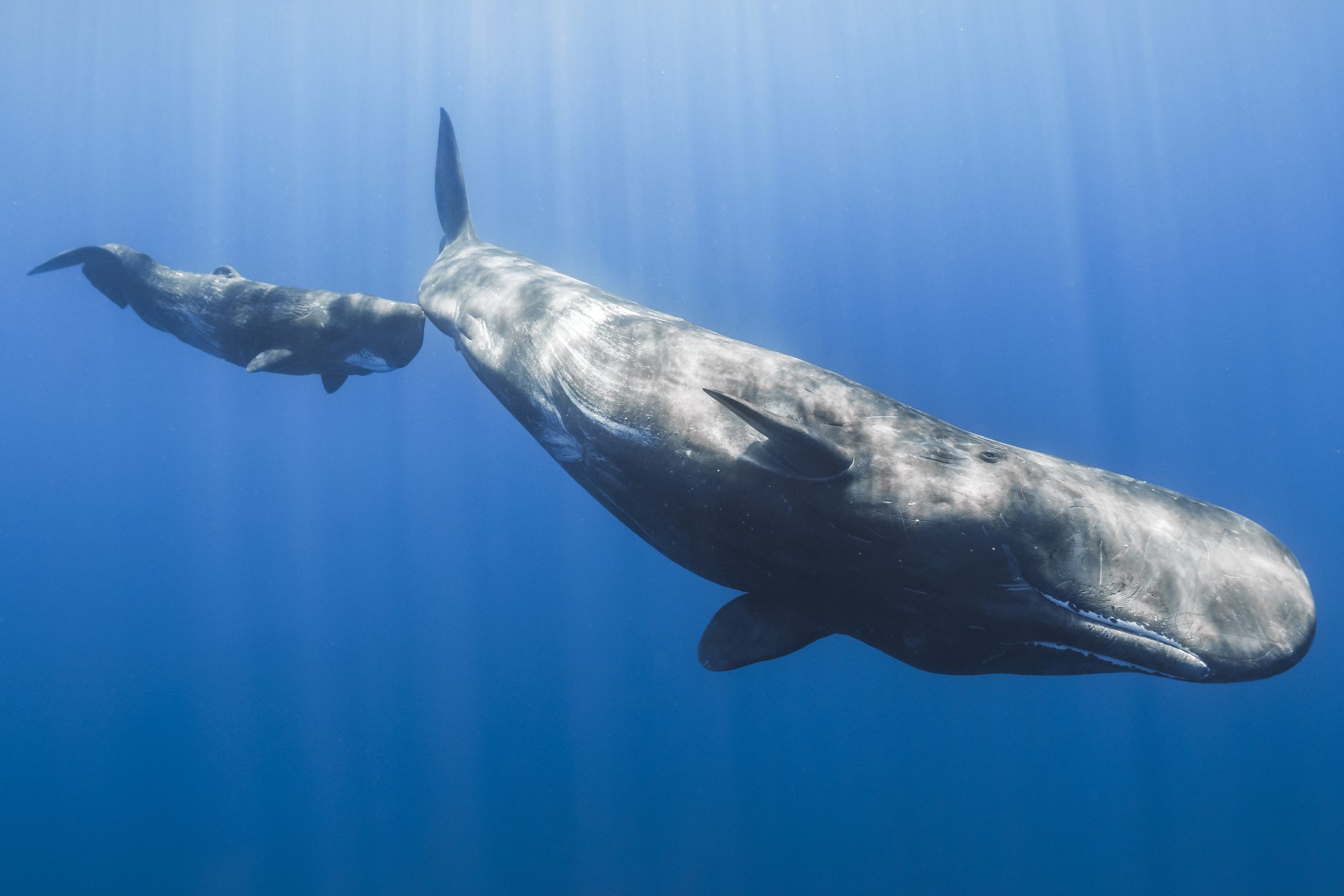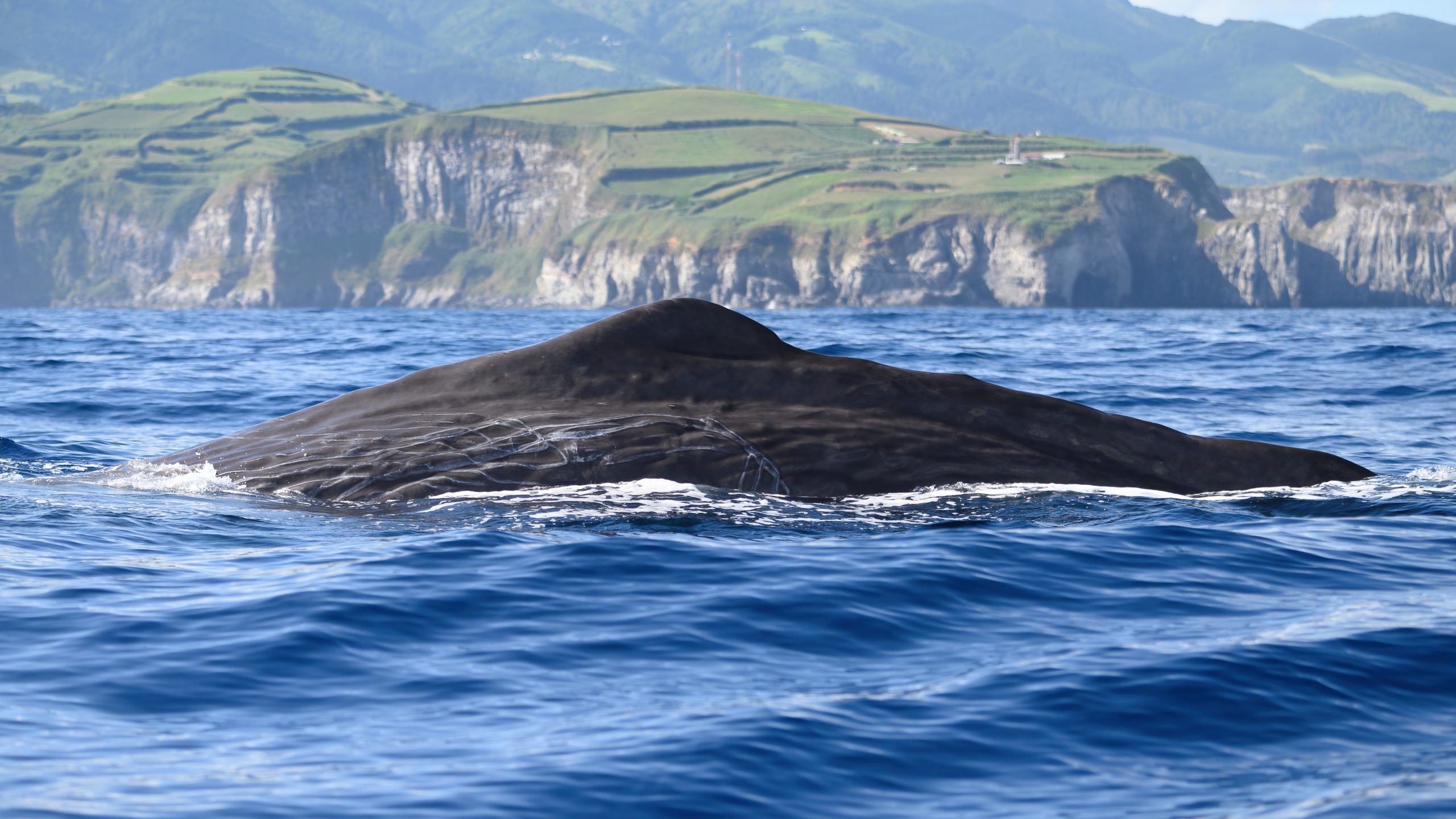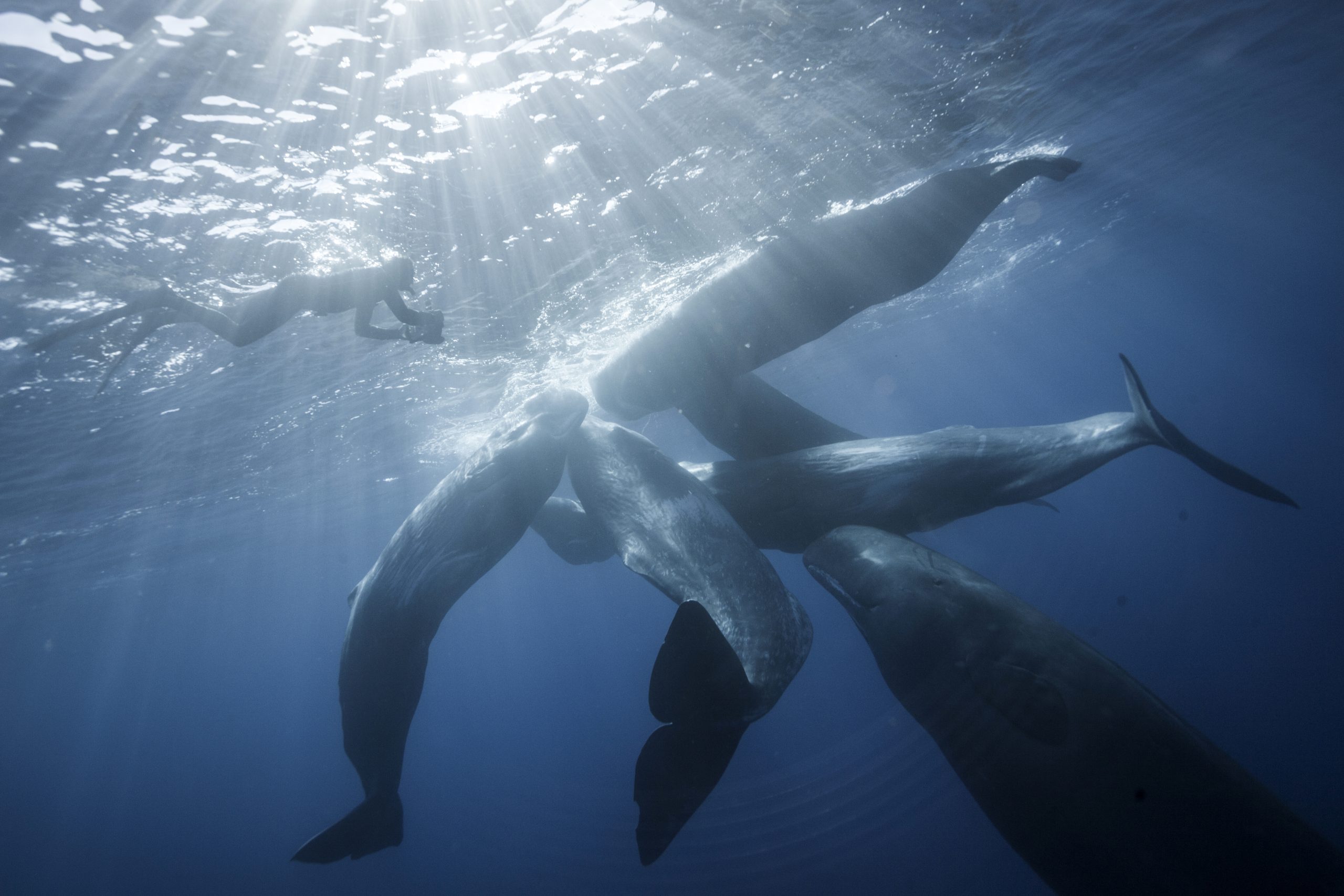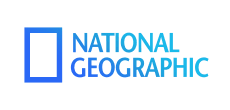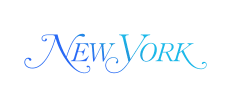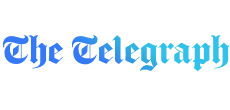Sperm Whales are among the most fascinating and mysterious creatures in the ocean. These magnificent mammals boast immense size, remarkable intelligence, and incredible diving abilities. But perhaps one of the most intriguing aspects of the Sperm Whale is its diet.
In this post, we will delve into the underwater world of the Sperm Whale, exploring the secrets of its feeding habits and the ecological impact it has on the ocean’s ecosystems. Join us as we discover the fascinating world of the Sperm Whale’s diet.
Sperm Whale Body Adaptations
Sperm whales are very well adapted to live and hunt in the world’s deepest oceans. Their general appearance consists of a stream-lined, dark body and a more or less squared head. They have poor eyesight compared to humans and other animals, but they compensate for this with a perfectly specialized jaw and head.
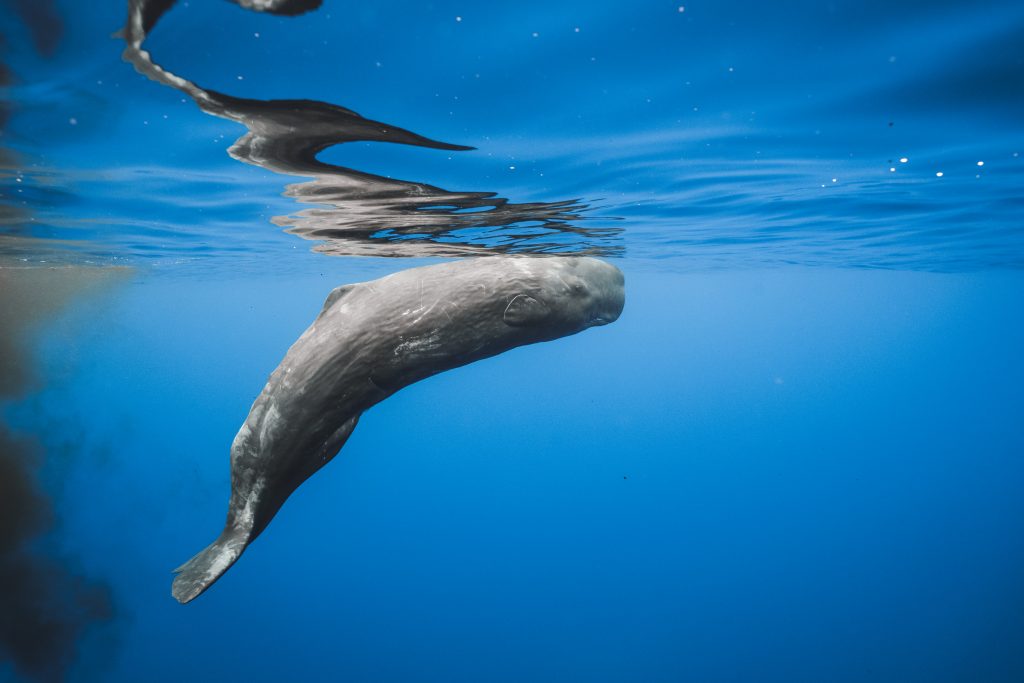
The Melon – A Powerful Organ!
The head of sperm whales contains a significant adipose tissue called the melon. Inside this organ, there is mainly spermaceti, a waxy substance that gave the sperm whale its name. In connection with the melon organ, sperm whales can circumvent obstacles and find food even in the dark depths of the ocean.
A Specialized Long Jaw
The long and narrow jaw of sperm whales contributes to this specialized lifestyle as well. In the lower jaw, you can find up to 52 teeth, while the upper jaw’s teeth rarely break through the gums. However, it’s not just about these small things; the whole body is also adapted to extraordinary diving capabilities!

Sperm Whale Diving
Dive Depth
The deepest dive ever recorded for a sperm whale has been almost 3 km deep. Humans can only reach these depths with artificial capsules, like submarines. How sperm whales can cope with the enormous pressure down there is still not fully understood.
✨ Related articles: Do whales and dolphins lay eggs? | How do dolphins mate? | How Fast Can Whales Swim | How Do Whales and Dolphins Communicate? | Is the Fin Whale endangered? | Portuguese Man-o-war (Physalia physalis) | What is a Group of Dolphins called? | What Do Dolphins Eat?
Sperm Whales Dive Cycle
However, we already know a lot about this species’ common dive cycle. After resting at the surface for around 10 minutes, sperm whales breathe out one last time and start the deep dive by showing their famous fluke. Then, they will usually dive for 40–60 minutes, but sometimes longer. The longest recorded dive has lasted almost two hours!

And now you are probably asking yourself what these guys are doing down there for so long?
Sperm Whales Hunting Behavior
As they typically dive to at least 600 – 800 meters, it is hard for humans to observe what they are doing all the time. Nevertheless, underwater microphones, also called hydrophones, gave us some striking information about their hunting behavior. Using their melon organ, sperm whales can produce the loudest sounds on Earth. With up to 233 decibels of loud echolocation clicks, they can locate their primary food sources without seeing anything.

In addition to listening to those clicks, we learned about their food sources by examining the stomach contents of stranded individuals. You will wonder, but this content differs from the location where the whale spent most of its time!
Sperm Whale Diet
In different seas, we also have various animals that can serve as prey for sperm whales. They need to eat regularly and in massive amounts. To withstand the harsh environment, sperm whales eat around 3% of their body weight every single day! This makes about one ton of prey daily. That’s a lot! But what do they actually hunt in these vast amounts?

Main Food Source
Usually, sperm whales dive very deep, predominantly hunting on squids of every size. There are some indications that giant squids may be the favorite prey of sperm whales, although they also do not ignore a small snack squid in between. Giant squids weigh up to one ton and can measure more than 12 meters, so they can feed a sperm whale better than the small-sized squids. However, they also do not give up defenselessly. Several sperm whales can be found with markings around the head, resulting from the desperate fights of the giant squids.
In general, sperm whales eat between 400 and 800 squids per day, depending on size and hunting success. As squids are mainly water and have low energy content, sometimes the whales also substitute with other species they can find in the depths of the oceans.

Additional Food Sources
So besides squid, it is known that in some areas, sperm whales hunt on fish, which can make up to half of their prey. Moreover, rays, skates, and lobsters are occasionally found in the whales’ stomachs. And interestingly, even sharks seem to be on the menu for those ocean giants!

Most whale species cannot feed on sharks as they cannot swallow them whole. The throats of other whale species are too thin to swallow a complete shark, but sperm whales make an exception in this. Their throats are much more expansive, and thus, they are capable of swallowing sharks. Some sharks, which could be found in the stomachs of sperm whales, have been identified as megamouth sharks, sleeper sharks, basking sharks, blue sharks, and even mako sharks!
✨ Related articles: Is the Fin Whale endangered? | Sperm Whale diet | Sperm Whale’s Scars | Whale Watching in Azores: When is the best time? | What does a whale’s penis look like? | What does whale milk taste like?
Threats Connected to the Sperm Whale Diet
Because of their deep-diving lifestyle, sperm whales can widely avoid interference from fishermen, but they still face quite a few threats and challenges related to their diet.
Entanglement & Dragged Gear
Ghost nets and fishing lines are still among the greatest threats to these wonderful animals. They get entangled in floating nets and may swim long distances dragging the attached gear. These floating dangers can result in fatigue, reduced ability to feed, compromised reproductive success, injuries, and even death.
Depredation
Sperm whales are also known to occasionally fish from longline gear. This behavior is called depredation and can be found particularly in areas susceptible to overfishing and poor marine life. This highly intelligent whale species uses its long jaw to cause tension on the line, thus shaking the fish off the hook.
Floating nets, plastics, and other pollution debris may also occasionally be confused with prey and ingested by whales. Studies have found different trash items in the stomachs of sperm whales.
Noise
Moreover, humans make a lot of noise in the oceans. Sperm whales rely on sound to feed and communicate in the water. Although they are the loudest animals, artificially produced noises can cause marine mammals to change the frequency and amplitude of their calls, resulting in lower hunting success, decreased foraging behavior, displacement from their preferred habitats, and even hearing loss.
Pollution & Climate Change
Furthermore, humans have contributed significantly to climate change. Higher temperatures are influencing whales’ habitats and, with this, also altering potential food sources in the ocean. As you can see, humans and their pollution are still the biggest threats to sperm whales. Fortunately, at least active whaling ended in most countries around the world, resulting in increasing population sizes.
Sperm Whale Food & The Whale Pump – For a Healthy Environment
Finally, sperm whale food—or, let’s say, what remains after digestion — their feces are an important factor in fighting against climate change!

Several studies have indicated that the poop of whales helps to stimulate the growth of phytoplankton, which then creates a cleaner and healthier environment by pulling carbon out of the air. This cycle is called the whale pump. Estimates state that sperm and whales extract about 400,000 tons of carbon from the air every single year!
Moreover, these whales store tons of carbon in their fatty body tissues, which are removed from the atmosphere for many years. Later, when the whales die, they usually sink to the ground, resulting in a natural carbon sink for hundreds and thousands of years.
✨ Related articles: Are whales carnivores? | Do whales and dolphins lay eggs? | Does whale sperm make the ocean salty? | How do whales and dolphins communicate? | How do whales sleep? | How fast can whales swim? | How long can a Blue Whale hold its breath?
Conclusion
In conclusion, the Sperm Whale is a genuinely remarkable creature with a complex and diverse diet. From tiny squid to massive giant squid, these whales are capable of hunting a wide variety of prey, which they must consume in large quantities to sustain their vast bodies.
Their diet plays a crucial role in maintaining the delicate balance of the ocean’s ecosystems, and their hunting behavior helps to regulate the populations of their prey. A more in-depth understanding of the Sperm Whale’s diet can help us continue to unravel the mysteries of these incredible creatures and the role they play in the health of our oceans.
As we continue to explore and study the natural world, let us never forget the importance of these magnificent animals and the crucial role they play in maintaining the health of our planet.
If you would like to learn more about these valuable and gentle giants of the deep sea, you can join one of our memorable whale-watching tours!
Our knowledgeable team can provide you with tons of information about these unbelievable creatures and why it is so essential to raise conservation efforts for them!
Bibliography
- Best, P. B. (1999). Food and feeding of sperm whales Physeter macrocephalus off the west coast of South Africa. African Journal of Marine Science, 21.
- Clarke, M. R., Martins, H. R., & Pascoe, P. (1993). The diet of sperm whales (Physeter macrocephalus Linnaeus 1758) off the Azores. Philosophical Transactions of the Royal Society of London. Series B: Biological Sciences, 339 (1287), 67-82.
- Evans, K., & Hindell, M. A. (2004). The diet of sperm whales (Physeter macrocephalus) in southern Australian waters. ICES Journal of Marine Science, 61 (8), 1313-1329.
- Kawakami, T. A. K. E. H. I. K. O. (1980). A review of sperm whale food. Sci. Rep. Whales Res. Inst, 32, 199-218.
- Lavery, T. J., Roudnew, B., Gill, P., Seymour, J., Seuront, L., Johnson, G., … & Smetacek, V. (2010). Iron defecation by sperm whales stimulates carbon export in the Southern Ocean. Proceedings of the Royal Society B: Biological Sciences, 277 (1699), 3527-3531.
- Marcoux, M., Whitehead, H., & Rendell, L. (2007). Sperm whale feeding variation by location, year, social group and clan: evidence from stable isotopes. Marine Ecology Progress Series, 333, 309-314.
- Martin, A. R., & Clarke, M. R. (1986). The diet of sperm whales (Physeter macrocephalus) captured between Iceland and Greenland. Journal of the Marine Biological Association of the United Kingdom, 66 (4), 779-790.
- Okutani, T. A. K. A. S. H. I., & Nemoto, T. A. K. A. H. I. S. A. (1964). Squids as the food of sperm whales in the Bering Sea and Alaskan Gulf. Sci. Rep. Whales Res. Inst, 18, 111-127.
- Teloni, V., Mark, J. P., Patrick, M. J., & Peter, M. T. (2008). Shallow food for deep divers: Dynamic foraging behavior of male sperm whales in a high latitude habitat. Journal of Experimental Marine Biology and Ecology, 354 (1), 119-131.
- Whitehead, H., & Weilgart, L. (1991). Patterns of visually observable behaviour and vocalizations in groups of female sperm whales. Behaviour, 118 (3-4), 275-296





